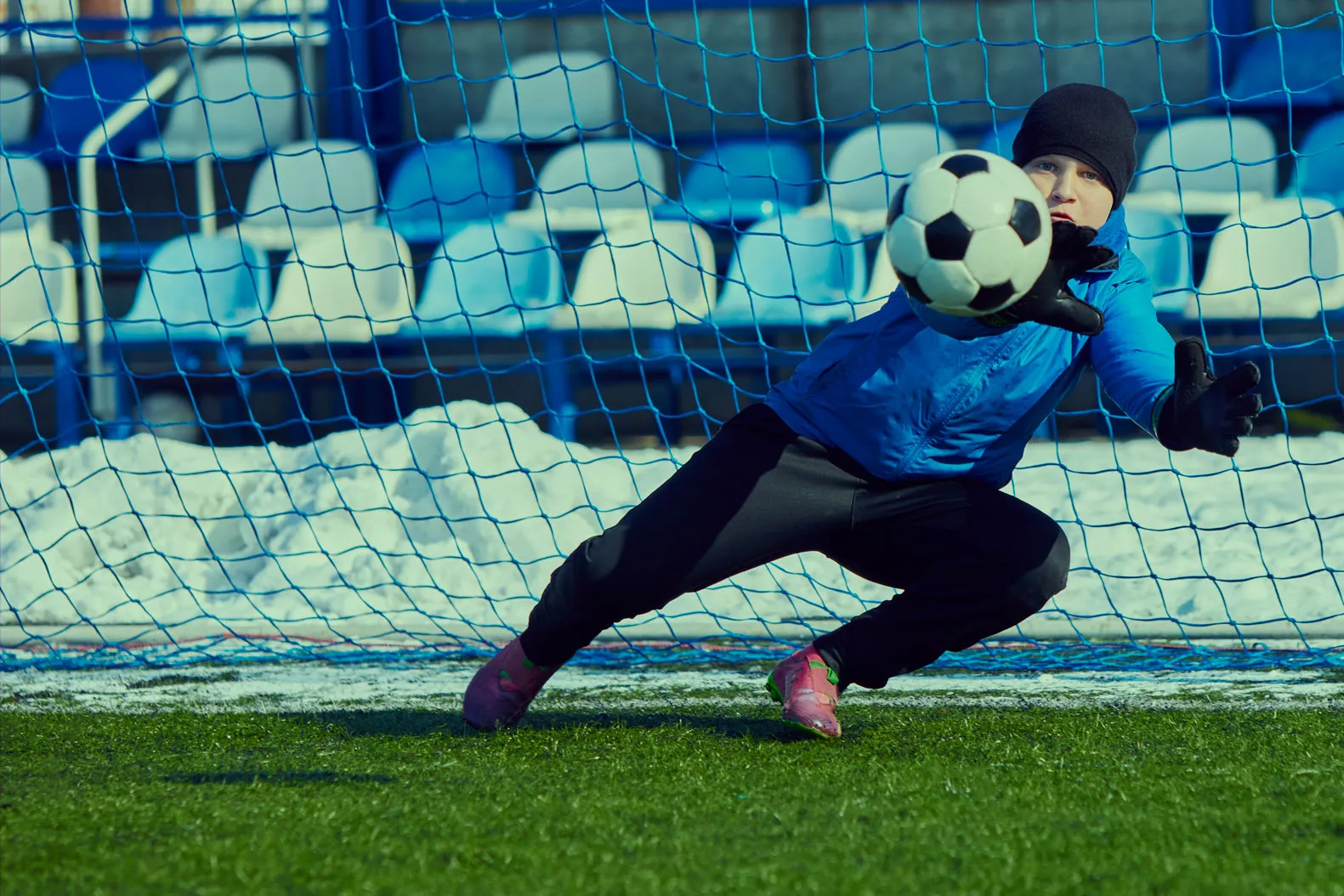
Understanding a goalkeeper’s micro-decisions during a phase of play
Antoine Roex, Keeper In Motion – 10 April 2025
A goalkeeper’s micro-decisions are crucial during a phase of play. Between analysis, anticipation, positioning management and mental influence, every action is thought out behind the scenes. Dive into the heart of these invisible decisions, fundamental to the performance of a modern goalkeeper.
Reading the game: pinpoint anticipation
It all starts with a split-second ability to perceive opponents’ intentions. Even before the ball approaches the surface, the goalkeeper begins a series of analyses: orientation of the ball carrier, body posture, positioning of team-mates, density in key areas. This cognitive phase relies on the extremely rapid processing of a wealth of visual information, often unconscious, but the result of prolonged learning. Every observed detail feeds into a mental scenario that enables us to predict the next step in the action. It’s not a question of reading the future, but of projecting probabilities from known configurations. Thus, a simple shift of the hips or a stare by an attacker can be enough to trigger a micro-decision: refocus, call for defense, or even initiate an exit. These anticipations are reinforced by experience, but also by familiarity with certain types of play or opposing combinations. The goalkeeper thus becomes a reader of intentions, an analyst in real time, well before being an executor.
Positioning: the art of getting into the right place without giving yourself away
Every fraction of a second, the goalkeeper’s positioning is readjusted according to the evolution of the situation. This dynamic positioning aims to maximize goal coverage while maintaining a balanced, responsive posture. A good goalkeeper doesn’t just stay centered, he modulates his stance, adapts the width of his base, moves forward or backward to reduce the angle of the shooter without exposing himself. This constant movement, often imperceptible to the onlooker, constitutes a series of microadjustments that determine the success of interventions. If you’re too far forward, you risk a lob, or you don’t have enough distance to react. Being too close to the line means offering a more open angle and losing aggressiveness. Correct positioning also depends on the ball: its location, its speed, the carrier’s preferred foot and the potential strike zone. These criteria instantly influence the height and axis to be adopted. Perfect positioning is never static; it’s a fine-tuned dance between caution and daring, discreet but decisive. A single ill-calibrated step can turn a harmless action into a conceded goal.
Managing time and limited space
Faced with a sudden acceleration in play, the goalkeeper is plunged into a compressed time-space. In the event of a one-on-one, a tense cross or a rebounded shot, he has just a few hundred milliseconds to choose an appropriate response. In these high-pressure situations, the perception of time becomes distorted: everything appears blurred to the untrained eye, but to a trained goalkeeper, it’s a theater of controlled actions. The challenge is to assess in a flash the distance to the ball, the opponent and the goal line. Should he go out? Stay? Dive? Close the angle? The brain sorts out and activates a motor response in real time, the fruit of a long process of repetition and simulated scenarios. Training in rapid information acquisition plays a fundamental role here. It’s not just a question of reflexes, but also of visual reading and body anchoring. Managing those moments when every tenth of a second counts requires strong emotional control, as panic or hesitation can slow down execution. Great goalkeepers shine not only for their explosiveness, but above all for their ability to make the right choices in a hurry.
Communication and influence on the opponent’s offensive phase
The goalkeeper is not only a last line of defence, but also an influential player in the opponent’s decision-making process. His ability to communicate effectively with his defense structures the block, limits exploitable space and directs the opponent towards less dangerous areas. But beyond instructions, his simple posture, physical presence and attitude have a direct impact on attacking behavior. An attacker who senses that the goalkeeper is active, noisy and always on the move will be more hesitant. Sometimes, an early exit, an authoritative shout or an insistent glance are enough to disrupt the technical execution of a shot. This psychological game has as much to do with the mind as with tactics: the goalkeeper imposes a form of invisible pressure, a permanent tension that pushes the opponent to rush his choices. By altering the pace of the opponent’s action, he also gives his defensive line time to reposition itself or block a trajectory. This role of influence, often underestimated, is an integral part of the micro-decisions to be taken, as it relies on a quick reading of the opponent’s mental and physical state. A passive attitude weakens the defense; an assertive stance galvanizes it.
Conclusion
Behind every save, every outing and every move lie dozens of micro-decisions that reveal the intelligence of the goalkeeper’s game. Far from being simple instinctive reflexes, these choices are the result of a combination of preparation, keen perception and stress management. The modern goalkeeper is a cerebral athlete, capable of orchestrating defense, anticipating opposing sequences and manipulating perception. To understand these invisible dynamics is to grasp the essence of a special position, where action is built as much in the head as in the legs. Technological advances and neuroscience continue to open up fascinating avenues for developing these skills. And more than ever, goalkeepers are becoming true strategists on the pitch.
References :
